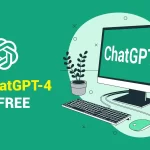AI is becoming an undeniable part of our lives and is influencing everything. AI is changing the education, sports, construction, and corporate industries. It is constantly changing the ways we operate and do things. Similarly, it’s changing how we learn new things. It is offering new opportunities for everyone to work on their skills.
For instance, there are AI learning tools which are challenging conventional learning methods. AI in education includes creating virtual classrooms and offering digital courses to students. So, if you want to know how is AI used in education, we are adding the details in this article.
Top 9 Applications of AI in Education
AI can optimize different educational tasks and make learning an easier process. To help you understand the applications of AI in education, we are sharing the top 9 that we could think of.
Personalized Learning
Not every student learns the same way. Some can understand a concept in one go, while others take hours to practice and grasp the idea. The biggest pitfall of conventional learning systems is that there wasn’t any customized learning. For this reason, AI is becoming an absolute reality. AI is helping launch new systems that personalize the learning content for every student.
Also, Machine Learning can determine how students are responding to the lessons. As a result, it will create a learning process that minimizes stress for students. In addition, AI in education will create customized lessons and games that increase the effectiveness of learning.
Adaptability in Access
According to recent research, 60% of education-centric businesses use ML and AL-based application development. This allows them to offer advanced features, such as multilingual support. This language ensures that you get educational content in multiple languages.
It’s also making education more accessible for hearing and visually impaired people. For instance, the course videos have automated subtitles for people with hearing issues.
Automation of Tasks
AI tools used in education can help automate regular tasks. To begin with, it helps create a customized teaching experience for students. In addition, it can help teachers grade the papers and check homework. Moreover, it makes it easier to analyze different research papers and make presentations. Also, note-taking has never been easier. This automation of regular tasks frees up time for students and teachers to work on other important tasks.
Easier Content Creation
ML and AI can be used to create amazing educational content for students. From the tip of our fingers, we are sharing the following examples:
Digital Lessons
There was a time when students would spend hours learning from thick books. However, AI is changing it by creating bite-sized digital lessons. These lessons are available in videos and presentations form, leading to easier learning. Also, these learning materials are space-efficient. The digital lessons are also easily accessible on different devices, making remote learning a reality.
Visualization of Information
With the traditional learning method, the students don’t get any visual help. However, with AI, the students get 2D and 3D visualizations of important concepts. As a result, it becomes easier for students to learn complex concepts.
Content Upgrades
When AI wasn’t popular, the books took years to get an update. However, AI can help provide updated information on your desired topics as soon as there is new research. Also, the students are notified whenever new content is added to their lessons.
Lowering the Skill Gap
There is a huge technology gap in businesses. However, by using AI in education, businesses can teach their staff new skills. AI will also help students upskill through continuous training. In addition, it will help them bring innovation to the work. It has a strong influence on Learning and Development as well because it analyzes how people learn new skills. Once the system adapts to someone’s way of learning, the learning process will be automated as well.
All-Time Assistance through Conversational AI
Conversational AI will offer smart tutoring to students. That’s because they can observe how different people consume the study material and personalize the learning experience. For instance, corporate employees are already using digital learning courses and distance learning. It allows them to upskill without taking a break from their work.
In these cases, the AI chatbots can help them with enrollments. In addition, if a student experiences some errors, the chatbots will provide instant answers.
Personalized Feedback
To customize the learning experience, feedback is necessary. Also, effective teaching is incomplete without providing sufficient feedback. Having said that, AI in education will analyze the educational content on a daily basis. As a result, it will automatically create work reports.
It can help improve student satisfaction and ensure there’s no bias. Consequently, it will be easier to determine the weak spots. One can leverage this feedback to ensure the learning systems meet the different requirements of students.
Secure Learning System
Using AI in education can help create a decentralized and secure learning system. Data protection and accessibility are the common issues. For example, Nova is an AI-based learning management system that fixes authentication issues. As a result, it’ll be easier for schools to protect students’ data.
Uses in Exams
AI software can be used in interviews as well as exams to detect if someone is cheating. The teachers can keep an eye on students through microphones and web cameras. Also, many use a keystroke analysis to see if someone is doing the test suspiciously. The EdTech startups are already using artificial intelligence technology to focus on the pain points.
The Use Cases of AI in Education
AI is changing how students learn different topics because it offers an adaptive experience. Brands like Google are already combining AI and learning to offer educational experiences.
Google Classroom
It is one of the most popular tools that’s helping the students right now. For instance, the teachers can assign different tasks, make comments, and control interactions in the classroom. It also has an automatic grading system, so students don’t have to wait for weeks to get their results. Also, the teachers can see if students are improving or not.
As a part of the educational experience, students can use Google Scholar. Another option is to use Google Translate. For instance, Google Scholar promises quick access to scholarly articles as well as research papers. As a result, students can easily get data for their work or school assignments.
On the contrary, Google Translate eliminates language barriers. For instance, if some research paper is in German and students understand English, they can use this tool to translate the paper into English, a language that they can understand.
Coursera
This is a famous learning website and app that offers hundreds and thousands of courses to learners. It uses AI to offer relevant recommendations to the users and create seamless learning paths for students. Moreover, students will get suggestions about their learning progress, so feedback is easier to get.
The best thing about using AI in education is that it adjusts the content of the courses according to the student’s performance. In addition, the papers and tests are automatically graded.
Duolingo
This is a well-known learning app. It uses AI to create lesson plans from scratch for students. It creates language lessons. In fact, it monitors the progress of students and identifies the weak spots. As a result, the lessons will be modified.
There are regular vocabulary tests as well as interactive tests to help learn different languages properly. In addition, there is a speech recognition feature. Since pronunciation is an important part of learning a new language, it gives feedback on pronunciation as well.
Benefits of AI in Education
The use AI in education is evident and its utilization will only expand. AI helps make our mundane tasks easier. If you use the right prompt, the task will be completed within a few seconds. However, the power of AI isn’t restricted to this only, which is why we are sharing some other benefits as well.
Higher Motivation & Engagement Among Students
We have already mentioned that using AI in teaching can help create a personalized learning experience. For instance, it provides instant feedback to the students.
It can be used to achieve a gamified experience. This makes learning interactive as well as engaging. The teachers can use AI to use an interactive approach, which engages the students. Also, it keeps them motivated to keep learning.
Improved Performance
Since AI systems provide quick feedback, the students work on their study progress. In particular, it offers targeted feedback, which makes it easier for students to work on their weak spots. These tools keep monitoring the behavior patterns among students, such as attention levels. As a result, students will be motivated to improve their learning experience.
Affordable Learning
AI in education can reduce the education costs, especially for the institutions. For instance, it can automate the tasks for admins, IT, and teachers. To begin with, you can use AI to automate the grading and schedule teachers’ time with students. Moreover, one can streamline the teaching process by creating course content. It will help education institutes cut down on resources without compromising on efficiency.
Continuous Evaluation
The educational tools designed with AI can help people collect and analyze the data. This can help teachers understand the behavioral patterns and learning outcomes of the students. In fact, these tools use predictive analysis to provide insights to the teachers so they can intervene where necessary. In addition, they can see which students are having a hard time learning.
While many people think that it’s only for the betterment of students, it’s not true. That’s because the insights can help teachers improve their teaching methodologies.
Challenges Associated with AI in Education
While AI in education has a lot of potential, we cannot turn a blind eye to its potential challenges. So, if you want to balance the use of AI in this industry, we are sharing some common challenges.
Lower Job Security
Since AI can automate lesson-planning and content, it is reducing the job security for teachers. AI used in education is not very advanced right now, but it will be. For instance, the demand for human teachers will reduce, which will result in the loss of jobs. While it’s evident that it will increase productivity, it can result in unemployment.
Dehumanization
With the constant use of AI in education, the learning experiences will be dehumanized. That’s because the AI will generate learning material and decide the lessons’ pace. As a result, students won’t have the experience of a human teacher. In addition, there is a change of bias with AI, so students won’t get an inclusive experience.
Expensive Implementation
AI provides great benefits, but it can be expensive to implement. It’s common for schools and other educational institutes to have limited budgets, which makes it challenging to bear the costs of AI implementation. In addition, training teachers to use AI requires a lot of paid courses, which are expensive as well. So, it’s evident that AI implementation is expensive, and not every school can bear the costs right now.
Higher Reliance on Technology
Since AI has the capacity to make things easier, there are chances that students and teachers will become too reliant on technology. It can lead to people procrastinating, and they won’t be able to develop problem-solving skills. Also, they won’t develop critical thinking, which is bad for their academic growth.
How are EdTech Tools Helping Create an Interactive Learning Experience
It’s not a new concept for teachers and schools to use tech tools to improve learning outcomes. AI makes a reliable assistant for teaching staff. For instance, it can help them create lesson plans without causing issues with quality. In addition, the teachers can create quizzes by extracting questions from books and presentations.
Is There a Need for Human Intervention?
AI is changing how teachers teach books and how students learn the concepts. However, there is a fair share of problems. For instance, there are chances that things will become too robotic. That’s why the human teachers will have to make an entry. In this section, let’s see how AI in education can benefit from human teachers.
Collaboration
First of all, AI and teachers can collaborate to achieve better results. For instance, AI can provide feedback and help create tests and instructions. On the other hand, teachers can interpret the content and add engaging material to the learning content.
Essential Role of Teachers
Teachers will always remain the motivators and mentors, which is something AI cannot copy. To illustrate, teachers bring empathy and emotions to the classroom. This can help spark critical thinking and creativity in the classroom.
The collaboration of teachers and AI will help people maximize the benefits of technology while keeping the human factor intact. The teachers need to set some boundaries and rules for using technology during class times.
For instance, teachers can forbid students from using AI during class activities. For this purpose, their access to the internet can be cut off. This will encourage students to think on their own. Having said all this, the AI tool manufacturers must take a balanced approach. Also, teachers have to understand the optimal way of integrating AI in the classroom.
Future Trends of AI in Education
AI is the future and it’s needless to say that its use in the education industry will only increase. So, to help understand the future trends of AI in education, we are sharing some trends that teachers should look forward to.
Multimodality
This is basically the upgraded version of generative AI models. It has the ability to translate data into different modalities. For instance, you can translate images into text or audio into videos. This will help create more engaging and exciting lessons. Also, it generates lessons quickly. As a result, students will be able to learn better and more effectively as the lessons will be more interactive.
Increased Trend of Humanized and Social-Emotional Teaching
With AI in education, the social-emotional skills will be enhanced. That’s because full dependency on AI is not possible for students. As a result, teachers will have to become available for students to offer a humanized learning experience.
Democratization
Time will only increase the accessibility of AI tools. Also, the user-friendliness will attract more people. This means that educators will be able to maximize the benefits in learning settings. For instance, AI will be used to automate the admin tasks and create customized learning plans. Moreover, the availability of instant feedback will increase engagement as well.
Higher Teaching Productivity
New AI tools are coming out in the education industry. This means that lesson planning, test creation, and learning content creation will become more streamlined. As a result, students will get more support from teachers, which improves their engagement. In addition, it increases understanding of educational concepts.
Personalized Learning Experience
Adaptive AI algorithms will become more popular, and they will change the learning experiences. For instance, teachers will be able to create unique educational pathways that focus on specific high and low points of students. As a result, students will get a diverse learning experience.
Self-Directed Learning
AI in education will change how students learn as well. For instance, ChatGPT is already helping students get answers to their questions. Also, the students will be able to create a self-directed learning experience.
VR & AR Experiences
The use of VR and AR will become extremely popular in AI. For instance, multimodality will be used to create engaging content. Also, the videos will be more simulated.
Highly Inclusive & Accessible Learning
The educational material and learning resources will become more inclusive. This means that the diverse learning needs of students will be met. Also, with closed captions, students with hearing issues will be able to learn as well. Also, students will be able to connect with the content more effectively.
Frequently Asked Questions
Does AI really help in education?
Yes, AI has helped create multiple learning tools. For instance, Google Classroom is the biggest example that leads to immersive classroom experience.
How should teachers use AI?
Teachers can use AI for creating tests and worksheets. Furthermore, the teachers will have the option to update the course content with new trends.
Will AI completely replace the teachers?
No, it will not completely replace the teachers. Nevertheless, it might make course planning efficient and faster for the teachers.
Is AI good or negative for education?
AI is good for education if it’s used for assistance. However, full dependency on AI will make the learning experience lagging. Also, it will limit interactions with real people, which is bad for out-of-the-classroom learning.
The Bottom Line
Now that we have explored the ins and outs of AI in education, it’s time to make a decision. For instance, teachers shouldn’t stop themselves from using AI for educational purposes. That’s because the tech world is changing, and we’ve to embrace this trend.
If used properly, AI in education will obviously yield more benefits than harm. The only thing we’ve to do is to ensure moderate use because it’s a positive technology. Also, students shouldn’t be allowed to fully rely on this technology. In the end, it’s all about trusting in your own skills and only using AI for assistance.





